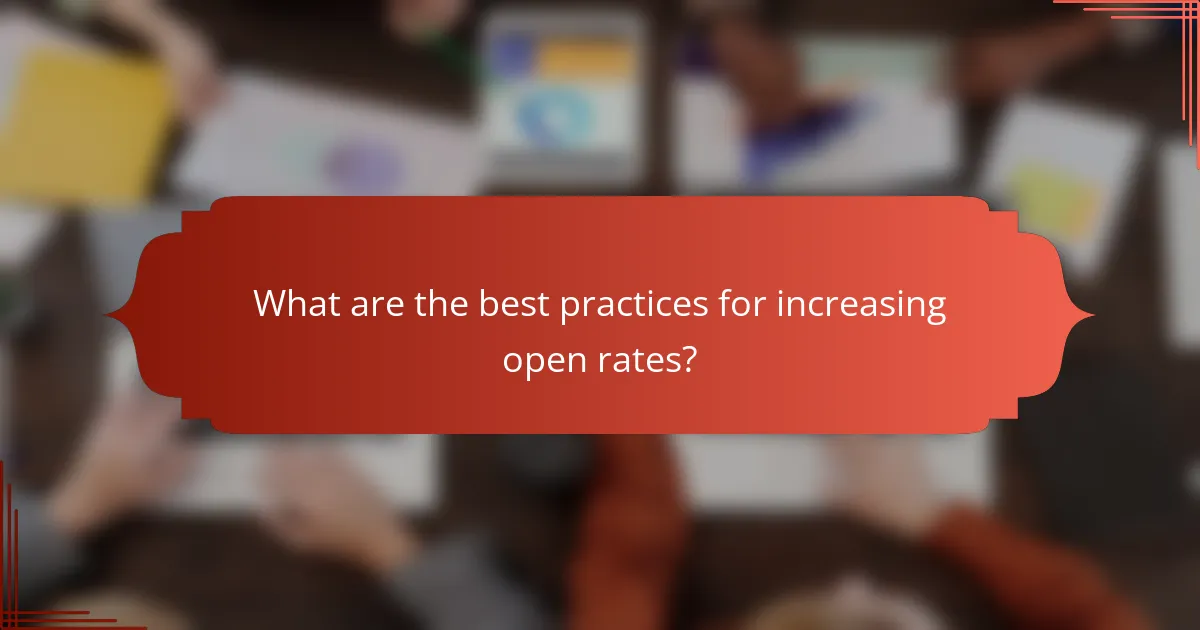Crafting effective subject lines is crucial in email marketing, as they play a vital role in capturing attention and encouraging recipients to open your emails. By focusing on engagement, relevance, and audience tailoring, you can significantly boost open rates. Additionally, avoiding common pitfalls such as spammy language and misleading phrases will help ensure your messages reach the intended audience effectively.

How to craft effective subject lines in email marketing?
Effective subject lines in email marketing grab attention and encourage recipients to open the email. They should be engaging, relevant, and tailored to the audience to maximize open rates.
Use personalization techniques
Personalization in subject lines can significantly increase open rates. Including the recipient’s name or referencing their past interactions makes the email feel more tailored and relevant.
For example, a subject line like “John, your exclusive offer awaits!” is more likely to catch attention than a generic one. Consider segmenting your audience to create more personalized content based on their preferences or behaviors.
Incorporate urgency and scarcity
Creating a sense of urgency or scarcity can compel recipients to act quickly. Phrases like “Limited time offer” or “Only a few spots left” encourage immediate engagement.
Using time-sensitive language, such as “Act now!” or “Sale ends tonight!” can significantly boost open rates. However, ensure that the urgency is genuine to maintain trust with your audience.
Utilize clear and concise language
Clear and concise language is essential for effective subject lines. Aim for brevity while still conveying the main message, ideally keeping it under 50 characters.
A straightforward subject line like “Get 20% off your next purchase” communicates value without unnecessary words. Avoid jargon or complex phrases that may confuse the reader.
Experiment with emojis
Emojis can add a visual element that makes subject lines stand out in crowded inboxes. They can convey emotion or context quickly and effectively.
For instance, using a shopping bag emoji in “️ Your exclusive sale is here!” can attract attention. However, use them sparingly and ensure they align with your brand voice to avoid appearing unprofessional.
Test different lengths
Testing various subject line lengths can help determine what resonates best with your audience. Shorter subject lines (around 30 characters) may perform better on mobile devices, while longer ones can provide more context.
Conduct A/B testing to compare performance metrics like open rates and click-through rates. This data can guide you in finding the optimal length for your specific audience.

What are the best practices for increasing open rates?
To increase open rates, focus on crafting compelling subject lines, segmenting your audience, and optimizing send times. Implementing these strategies can significantly enhance engagement and ensure your emails reach the right people at the right time.
Segment your audience
Segmenting your audience involves dividing your email list into smaller groups based on specific criteria such as demographics, interests, or past behaviors. This allows you to tailor your messages to meet the unique needs of each segment, which can lead to higher open rates.
For example, if you run a retail business, you might segment your audience by purchase history, sending targeted promotions to frequent buyers while offering re-engagement campaigns to lapsed customers. This personalized approach can make your emails more relevant and appealing.
Optimize send times
Choosing the right send time is crucial for maximizing open rates. Analyze your audience’s behavior to determine when they are most likely to check their emails, which can vary by industry and demographic.
For instance, B2B emails often perform better during weekdays, particularly mid-morning or early afternoon, while B2C emails may see higher engagement on weekends. Testing different send times can help you identify the optimal schedule for your specific audience.
Analyze previous campaigns
Reviewing the performance of past email campaigns is essential for understanding what works and what doesn’t. Look at metrics such as open rates, click-through rates, and unsubscribe rates to identify patterns and trends.
For example, if you notice that emails with certain keywords in the subject line consistently perform better, consider incorporating similar language in future campaigns. This data-driven approach can guide your strategy and improve overall effectiveness.
Utilize A/B testing
A/B testing, or split testing, involves sending two variations of an email to see which one performs better. This method allows you to experiment with different subject lines, content, and layouts to determine what resonates most with your audience.
Start by testing one variable at a time, such as subject line wording or the inclusion of emojis. Analyze the results to refine your approach and apply successful elements to future emails, ultimately boosting your open rates.

What common mistakes should be avoided?
To improve email open rates, avoid common mistakes that can alienate recipients or trigger spam filters. Key pitfalls include using spammy language, misleading subject lines, and excessive capitalization.
Avoid spammy language
Spammy language can significantly reduce your email’s chances of being opened. Phrases like “free,” “guaranteed,” or “act now” often trigger spam filters, causing your emails to land in the junk folder. Instead, opt for clear and genuine language that reflects the content of your message.
Consider using a friendly tone and personalizing your subject lines. For example, instead of saying “Free Gift Inside,” try “A Special Thank You Just for You.” This approach not only avoids spam triggers but also engages the recipient more effectively.
Don’t mislead recipients
Misleading subject lines can damage trust and lead to higher unsubscribe rates. If the subject line promises something that the email does not deliver, recipients may feel deceived. Always ensure that your subject line accurately reflects the content of the email.
For instance, if your email is about a new product launch, avoid vague phrases like “Exciting News!” Instead, use something specific like “Introducing Our Latest Product Line.” This transparency helps build credibility and encourages recipients to open your emails.
Limit the use of all caps
Using all caps in subject lines can come across as shouting and may deter recipients from opening your emails. It can also trigger spam filters, further reducing your open rates. Aim for a balanced approach with proper capitalization to maintain professionalism.
As a rule of thumb, reserve all caps for emphasis on a single word or phrase, such as “LIMITED TIME OFFER.” This technique draws attention without overwhelming the reader. Keep your subject lines clear and easy to read for the best results.

What tools can help with subject line optimization?
Several tools can significantly enhance your subject line optimization efforts by providing insights and analysis. These tools help you craft compelling subject lines that increase open rates and engagement.
Use CoSchedule Headline Analyzer
CoSchedule’s Headline Analyzer evaluates your subject lines based on various factors like word balance, length, and emotional impact. It provides a score and actionable suggestions to improve your headlines.
To use it effectively, aim for a headline score in the high 70s or above. Incorporate power words and keep your subject lines concise, ideally under 60 characters, to maximize visibility in inboxes.
Leverage Mailchimp’s subject line tester
Mailchimp offers a subject line tester that allows you to compare multiple subject lines side by side. This tool analyzes potential performance based on past campaign data and audience engagement.
When using this feature, experiment with different styles and tones to see what resonates best with your audience. Aim for subject lines that evoke curiosity or urgency, which can lead to higher open rates.
Utilize HubSpot’s email marketing tools
HubSpot provides a suite of email marketing tools that include subject line suggestions based on industry benchmarks and performance analytics. These tools help you understand what works best for your specific audience.
To maximize effectiveness, regularly review your email performance metrics and adjust your subject lines accordingly. Consider A/B testing different subject lines to determine which ones yield the best results, focusing on open rates and click-through rates for optimization.

How do cultural differences affect subject line effectiveness?
Cultural differences significantly impact the effectiveness of email subject lines. Variations in language, humor, and local customs can influence how recipients perceive and respond to messages.
Consider regional language nuances
Language nuances can greatly affect subject line interpretation. For instance, a phrase that resonates well in English may not translate effectively into other languages, potentially leading to misunderstandings. It’s essential to use clear and culturally appropriate language to ensure the message is received as intended.
Using local idioms or expressions can enhance relatability. For example, a subject line in Spanish might incorporate regional slang that appeals to a specific audience, making it more engaging.
Adapt to local trends and preferences
Local trends and preferences play a crucial role in crafting effective subject lines. Understanding what topics are currently popular or relevant in a specific region can help tailor your message. For example, during holiday seasons, incorporating local festivities into your subject lines can increase open rates.
Additionally, consider the preferred tone of communication in different cultures. Some regions may respond better to formal language, while others might appreciate a casual approach. Testing different styles can provide insights into what resonates best with your audience.

What emerging trends are shaping email subject lines?
Emerging trends in email subject lines focus on personalization, brevity, and the use of emojis. These elements can significantly enhance engagement and open rates by making emails more relevant and visually appealing to recipients.
Personalization techniques
Personalization in subject lines involves tailoring the content to the recipient’s preferences or behaviors. This can include using the recipient’s name, referencing past purchases, or suggesting relevant content based on their interests. For instance, a subject line like “John, check out your personalized recommendations!” can create a stronger connection.
Consider segmenting your audience based on demographics or behavior to enhance personalization. This targeted approach can lead to higher open rates, often exceeding 20-30% compared to generic subject lines.
Use of emojis
Incorporating emojis in subject lines can capture attention and convey emotions quickly. Emojis can make your emails stand out in crowded inboxes, but they should be used judiciously. For example, a subject line like ” Big Sale Alert: 50% Off Just for You!” can create excitement.
However, be mindful of your audience and the context. Some professional settings may find emojis inappropriate, so test their effectiveness with your specific demographic before widespread use.
Conciseness and clarity
Concise subject lines are crucial, as most recipients only see a few words before deciding to open an email. Aim for 6-10 words or around 40-50 characters to ensure clarity. A clear subject line like “Your Weekly Update: New Features and Tips” informs the recipient about the email’s content without ambiguity.
Using action-oriented language can also enhance clarity. Phrases like “Discover,” “Join,” or “Get Started” encourage engagement and prompt the recipient to take action.
Testing and optimization
Regularly testing different subject lines is essential for optimizing open rates. A/B testing allows you to compare two variations to see which performs better. For example, test different personalization techniques or emoji usage to determine what resonates most with your audience.
Track metrics such as open rates and click-through rates to evaluate performance. Adjust your strategies based on these insights to continually improve your email campaigns.
